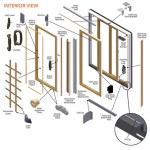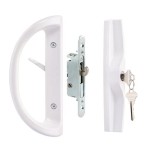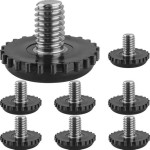Plans for a Wooden Patio Table: A Comprehensive Guide
A wooden patio table is a timeless addition to any outdoor space, offering durability, rustic charm, and a natural touch. Whether you prefer a simple and minimalist design or an elaborate, intricately crafted masterpiece, the possibilities for creating a stunning patio table are endless. This article will provide a comprehensive guide to crafting a wooden patio table, covering everything from choosing the right materials to assembling the finished piece.
Choosing the Right Wood
The first step in building your patio table is selecting the appropriate wood. Consider the following factors when making your decision:
- Durability: For outdoor use, choose a wood that is resistant to rot, decay, and insect infestations. Hardwoods like teak, cedar, and redwood are excellent choices.
- Appearance: Wood species offer diverse colors and grain patterns. Consider the overall aesthetic of your patio and choose a wood that complements the existing furniture and landscaping.
- Budget: Hardwoods can be expensive, but there are budget-friendly alternatives like pressure-treated pine or cedar that can withstand the elements.
Once you have chosen a wood, carefully consider the grade and quality. Look for boards that are free from knots, cracks, and other imperfections. Ensure the wood is properly dried to prevent warping or cracking.
Planning the Design and Dimensions
Before starting the construction process, carefully plan the design and dimensions of your patio table. Consider the following factors:
- Size: Determine the ideal size based on the number of people you want to seat. Consider the available space on your patio and leave adequate room for comfortable seating and movement.
- Shape: Rectangular, square, round, or oval tables each offer unique advantages. Choose the shape that best suits your space and style preferences.
- Height: Standard patio table height is typically 28-30 inches. Consider the seating arrangements and choose a height that provides comfortable dining.
- Style: Consider the desired style of your patio table. Do you prefer a simple and modern design, a rustic and traditional look, or a more elaborate and intricate style?
Once you have a clear design in mind, create a detailed plan or sketch that includes all the dimensions, materials, and construction steps. This will serve as a roadmap throughout the build process.
Constructing the Table Base
Building a sturdy and stable base is crucial for a long-lasting patio table. The base design can be as simple or complex as you like. Here are some common base options:
- Four-legged base: This is a classic and straightforward design. Cut the legs to the desired length and attach them to the tabletop using sturdy brackets or joinery techniques.
- Trellis base: This option offers a more intricate and decorative look. Construct a trellis-like frame using wood slats and attach it to the tabletop.
- Pedestal base: For a more modern and minimalist aesthetic, consider a pedestal base. This design features a single central support that connects to the tabletop.
Use woodworking tools and techniques like mortise and tenon joints, pocket holes, or screws to create strong and durable connections between the table base and the tabletop. Make sure to pre-drill holes before driving in screws to prevent wood splitting.
Building the Tabletop
The tabletop is the centerpiece of the patio table. Here are some considerations for constructing the tabletop:
- Plank arrangement: Decide whether to use a single large plank or multiple boards joined together for the tabletop. Consider the size, shape, and desired appearance.
- Edge detail: Add decorative details to the edges of the tabletop. Options include simple mitered edges, rounded edges, or even intricate carvings.
- Surface finish: Consider the desired finish for the tabletop. Options include sanding and sealing, stain and sealant, or even painting with weather-resistant paint.
Use clamps to secure the planks together during gluing and allow sufficient drying time. Sand the tabletop smooth and apply several coats of sealant or finish to protect it from the elements.
Finishing Touches
Once the base and tabletop are complete, consider finishing details that personalize your patio table. Some ideas include:
- Adding a tabletop umbrella hole: For a more functional table, create a hole in the center of the tabletop to accommodate a patio umbrella.
- Incorporating decorative elements: Add decorative details to the table legs, tabletop, or base using carving, inlay, or other embellishments.
- Adding a weather-resistant coating: Apply a final layer of weather-resistant sealant or finish to protect the wood from moisture and UV rays.
With careful planning, attention to detail, and a commitment to quality craftsmanship, you can create a stunning and functional wooden patio table that will be the centerpiece of your outdoor space for years to come.

Diy Outdoor Table Angela Marie Made
:max_bytes(150000):strip_icc()/cherishedbliss-2fe16e06a68b44589c6631e6b39ae68f.jpg?strip=all)
18 Diy Outdoor Table Plans

Diy Outdoor Table Angela Marie Made
:max_bytes(150000):strip_icc()/remodelaholic-b957b7f134eb4281be2bcb3dee084626.jpg?strip=all)
18 Diy Outdoor Table Plans

Outdoor Dining Table Kreg Tool

Bryan S Site Diy Cedar Patio Table Plans

25 Diy Patio Table Plans Free Wood Outdoor

Outdoor Dining Table Plans Houseful Of Handmade
:max_bytes(150000):strip_icc()/housefulofhandmade-2206fefc058449c593f4d964898c1288.jpg?strip=all)
18 Diy Outdoor Table Plans

Outdoor Dining Table Kreg Tool








